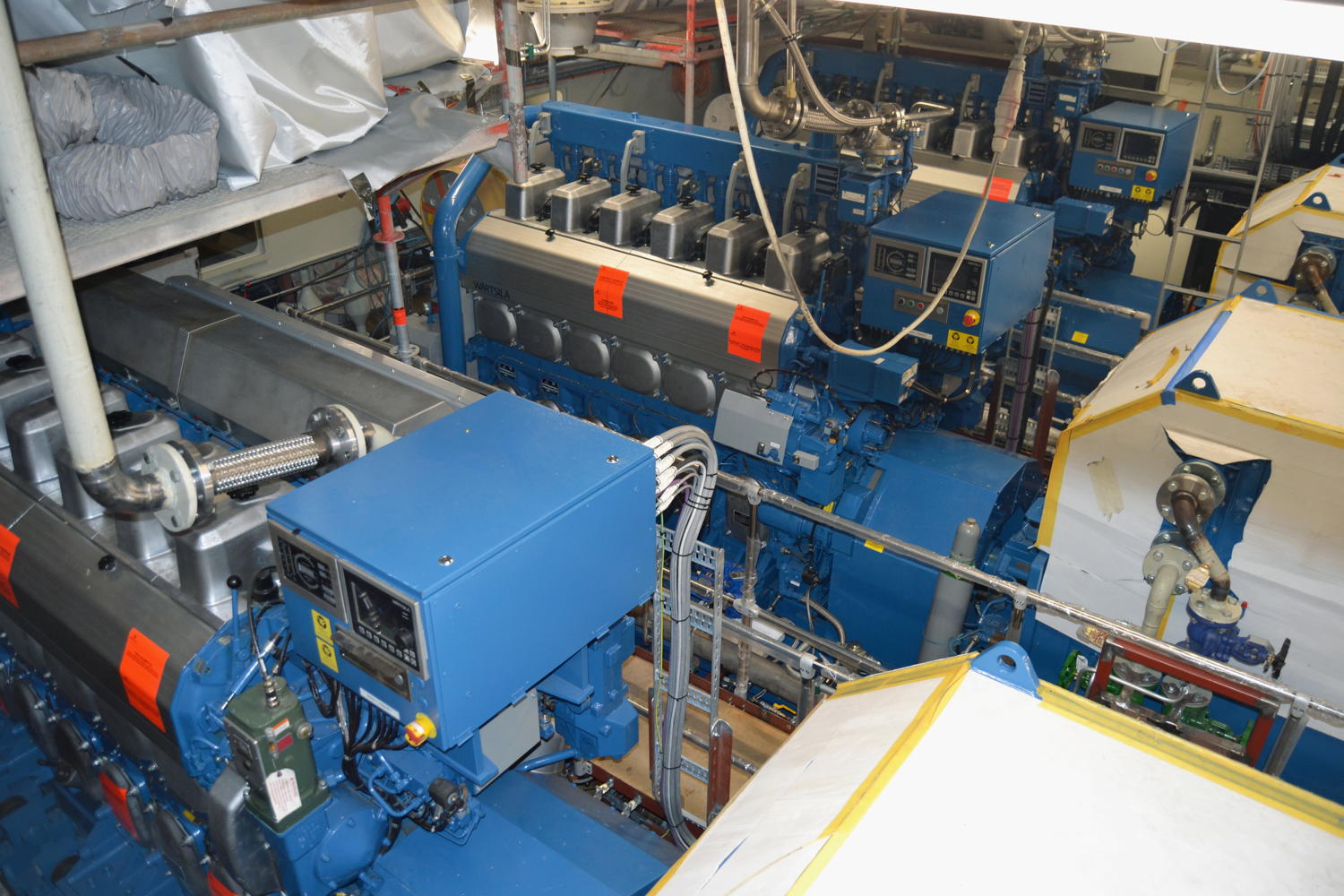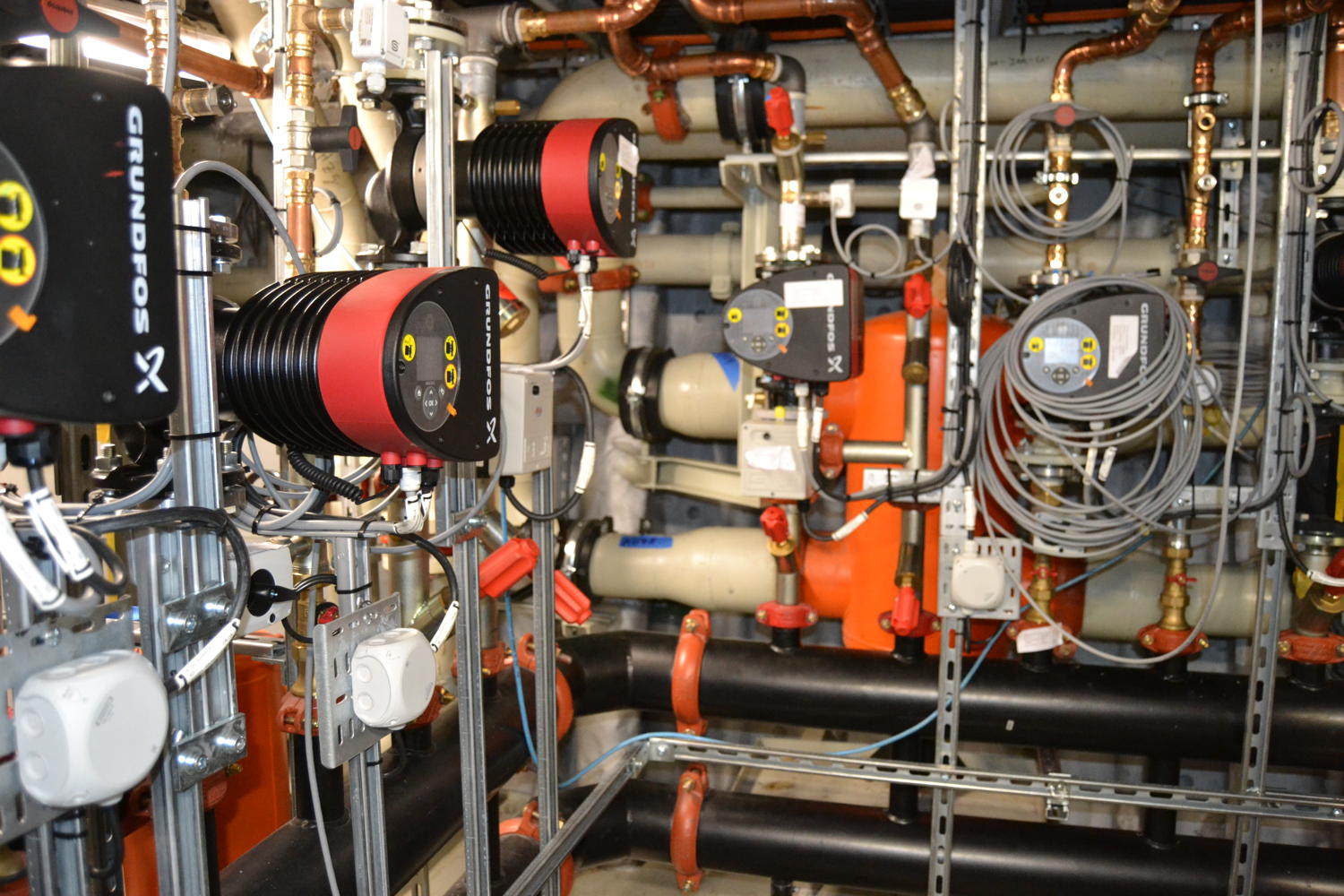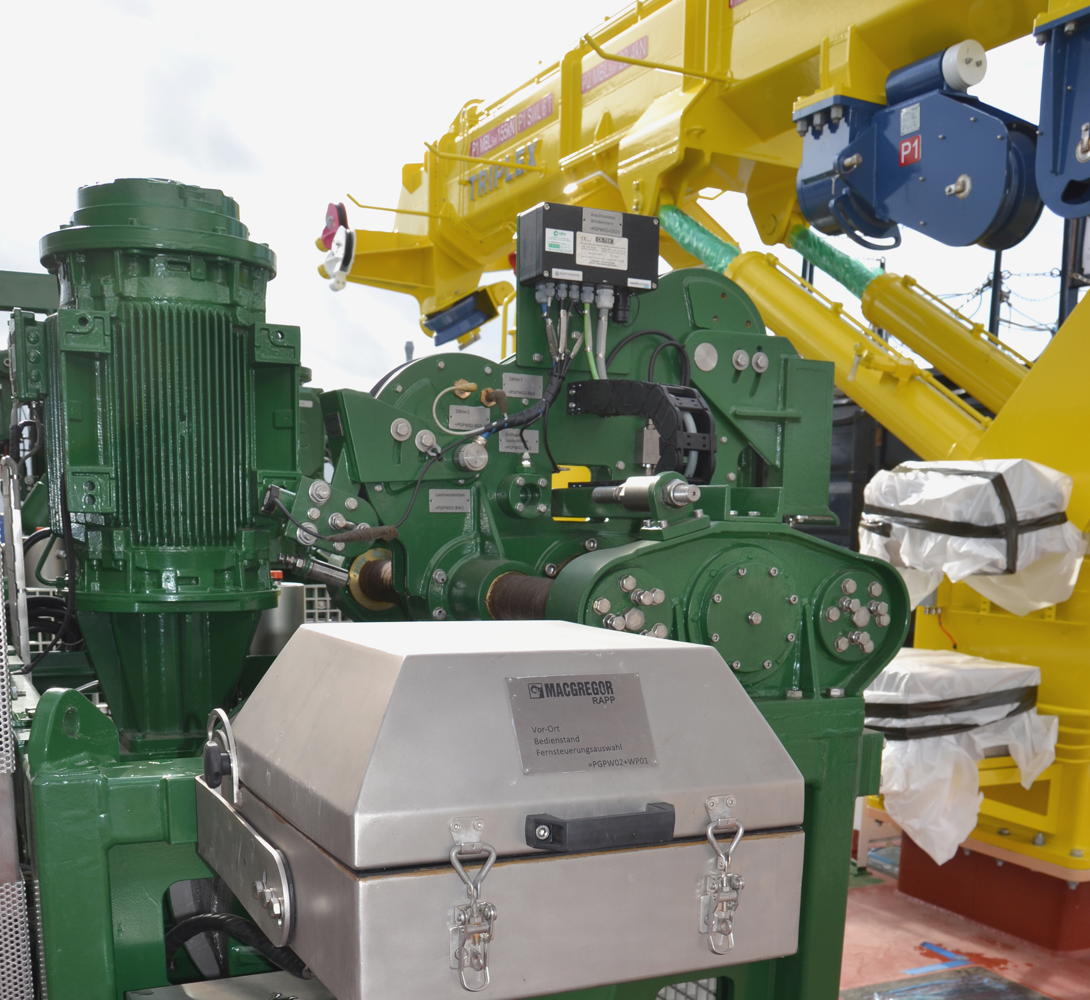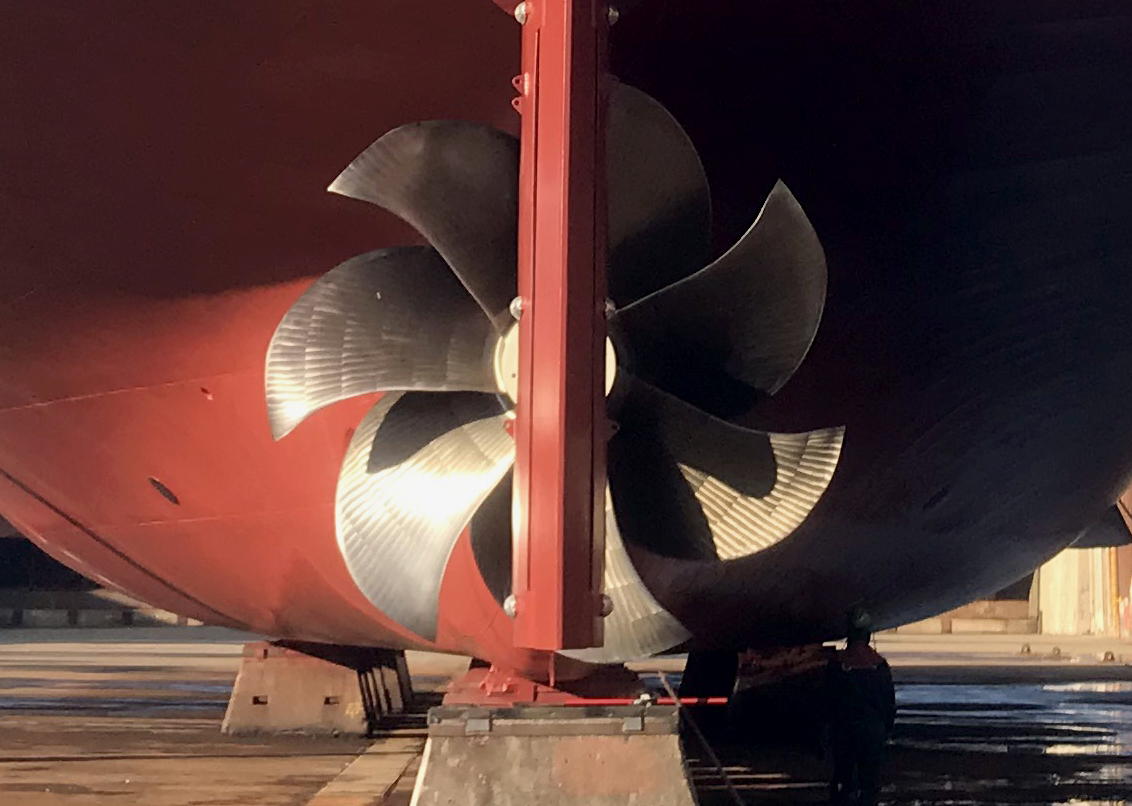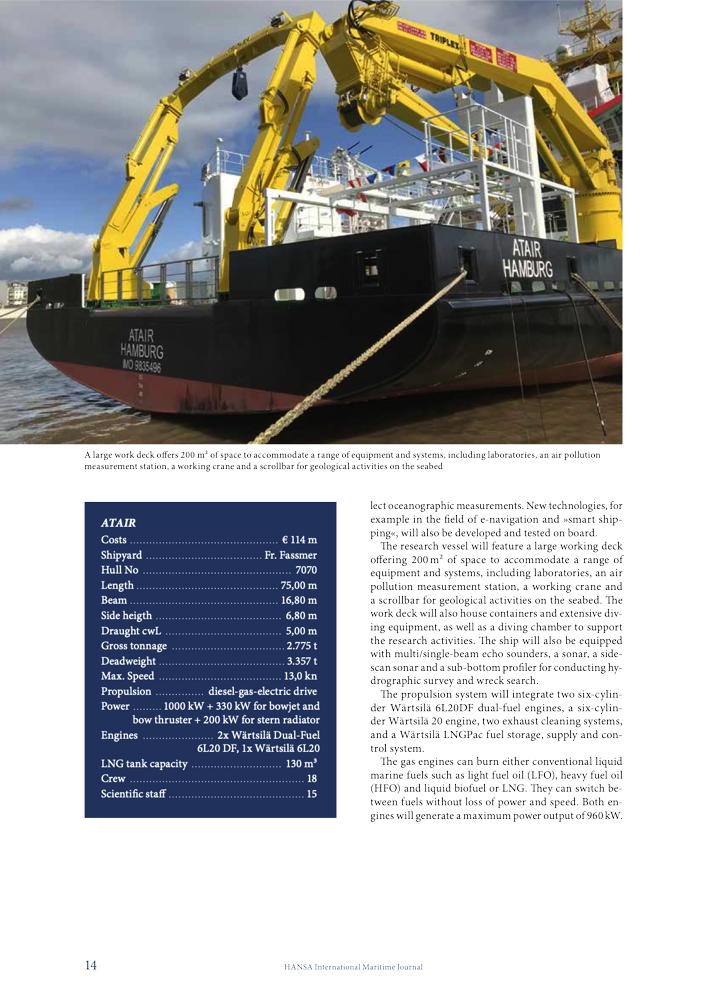The recent christening of »Atair« at Fassmer marks the start of LNG-fuelled operations on federal research vessels. The newbuilding features a sophisticated propulsion system and high-tech laboratories. Other federal fleet newbuildings are to follow.
The »Atair« will be the new flagship of the Bundesamt für Seeschifffahrt und Hydrografie (BSH), Germany’s federal mritime and[ds_preview] hydrographic agency in Hamburg. The vessel has a length of 74 m, a beam of 17 m and a draught of 5 m. It will be the biggest vessel in the BSH fleet.
The 75 m newbuilding comes at a cost of about 114 mill. €. The new »Atair«, which replaces a 30-year-old predecessor, is scheduled to enter service in 2020. The original »Atair« was introduced into service in 1987.
It is the world’s first LNG-powered survey vessel owned by a governmental authority. The »Atair« will conduct hydrographic surveys and wreck search operations, as well as marine environmental observations in the North Sea and the Baltic Sea. It will also perform technical testing of navigation and radar equipment. The shipyard’s CEO, Harald Fassmer, emphasizes: »With this newbuilding, we were once again able to demonstrate our competence in designing and building sophisticated vessels«. Back in 2016, Fassmer was awarded the contract by the BSH. With a displacement of 2,775 tons, the newbuilding was too large for Fassmer’s shipyard in Berne. Therefore, German Naval Yards in Kiel acted as subcontractor and assembled the hull. In March 2019, the half-finished vessel was transferred to Berne for completion.
Designed to be environment-friendly, the ship will have negligible impact on the marine environment and offer ideal conditions for the scientific work on-board. It will provide accommodation for 18 crew and 15 research personnel.
The »Atair« reaches a speed of around 13 knots and will be sailing in the North Sea, the Baltic Sea and the North-East Atlantic. It will also undertake cruises to collect oceanographic measurements. New technologies, for example in the field of e-navigation and »smart shipping«, will also be developed and tested on board.
The research vessel will feature a large working deck offering 200 m² of space to accommodate a range of equipment and systems, including laboratories, an air pollution measurement station, a working crane and a scrollbar for geological activities on the seabed. The work deck will also house containers and extensive diving equipment, as well as a diving chamber to support the research activities. The ship will also be equipped with multi/single-beam echo sounders, a sonar, a side-scan sonar and a sub-bottom profiler for conducting hydrographic survey and wreck search.
The propulsion system will integrate two six-cylinder Wärtsilä 6L20DF dual-fuel engines, a six-cylinder Wärtsilä 20 engine, two exhaust cleaning systems, and a Wärtsilä LNGPac fuel storage, supply and control system.
The gas engines can burn either conventional liquid marine fuels such as light fuel oil (LFO), heavy fuel oil (HFO) and liquid biofuel or LNG. They can switch between fuels without loss of power and speed. Both engines will generate a maximum power output of 960 kW. Wärtsilä also provided a third, pure diesel engine 6L20 of 1,200 kW.
The engines are elastically mounted to minimize underwater noise. The seven-bladed propeller from Schaffran was also designed to reduce noise emissions. It is driven by an electric engine with 1,600 kW of power. The ship is also fitted with one electrically powered bow thruster of 330 kW, one stern thruster of 200 kW and a Schottel pumpjet. For the first time, a DP system has been installed on a federal government ship.
The LNG tanks with a storage volume of 130m³ will ensure LNG-fuelled operational endurance for ten days. Only high-quality gas oil with a sulphur content less than 0.1% will be used. For diesel operation an additional 200 t tank has been installed to extend operations to 30 days. At a later stage a switch to synthetic and low-emission diesel fuel GtL (Gas-to-Liquid) will be considered.
The engines comply with the stringent International Maritime Organisation (IMO) Tier III and the US Tier IV emission regulations. They will also meet the requirements of the German »Blauer Engel« standards for eco-friendly ship design. »We are responsible for monitoring marine environmental protection regulations,« said Karin Kammann-Klippstein, president of BSH – »so we are committed to be in the forefront ourselves.
The »Atair« marks just the beginning of further investments by federal authorities. Two multi-purpose vessels will be built to replace »Deneb« and »Wega«. Initial talks about the technical requirements for these newbuildings have already started.
Krischan Förster






